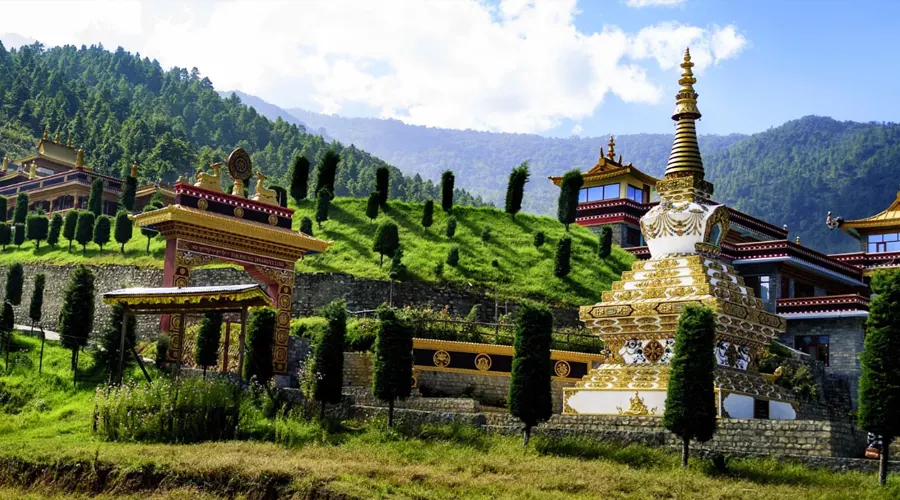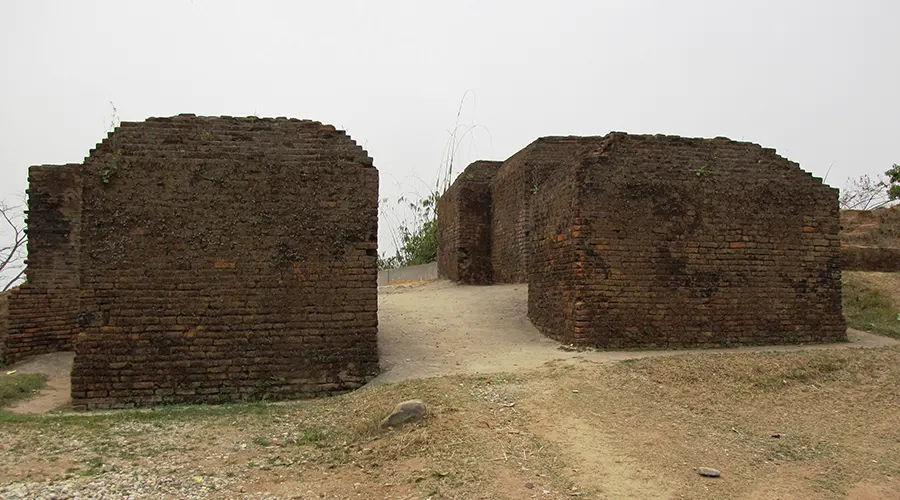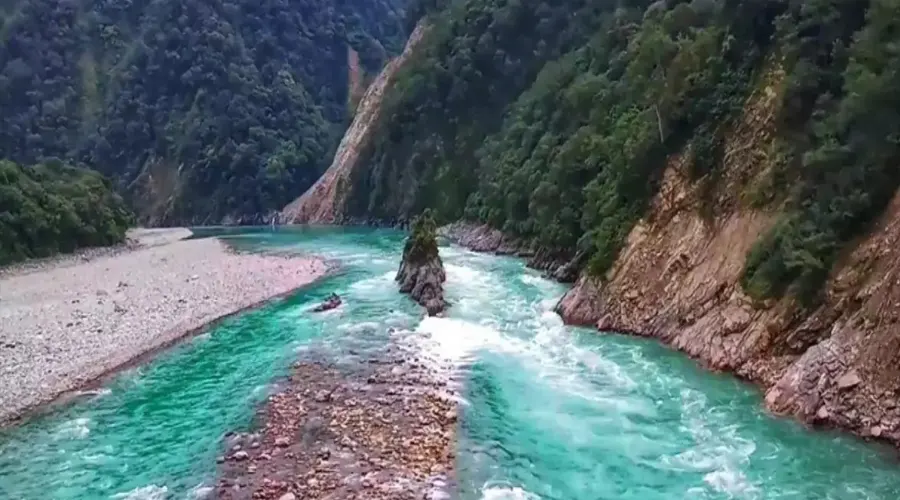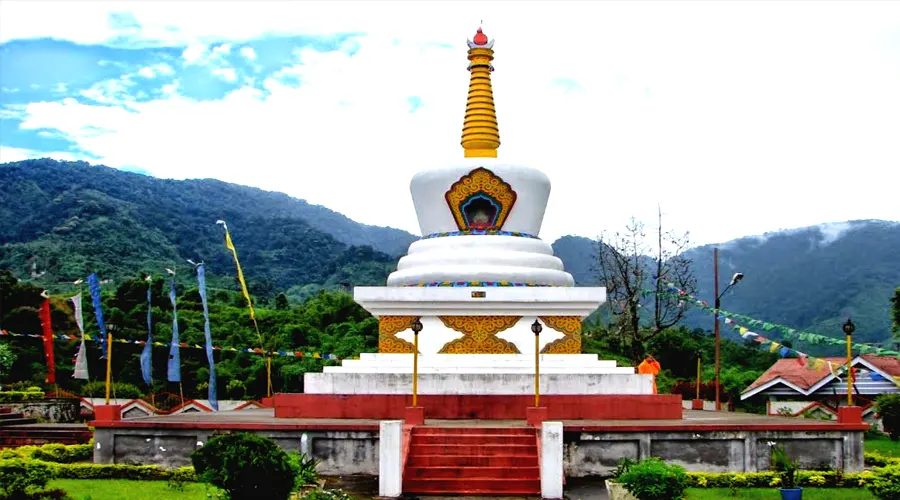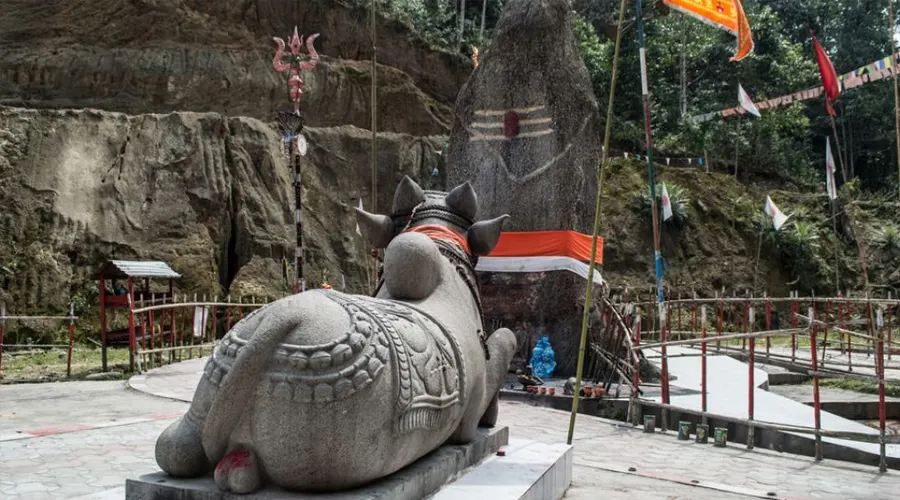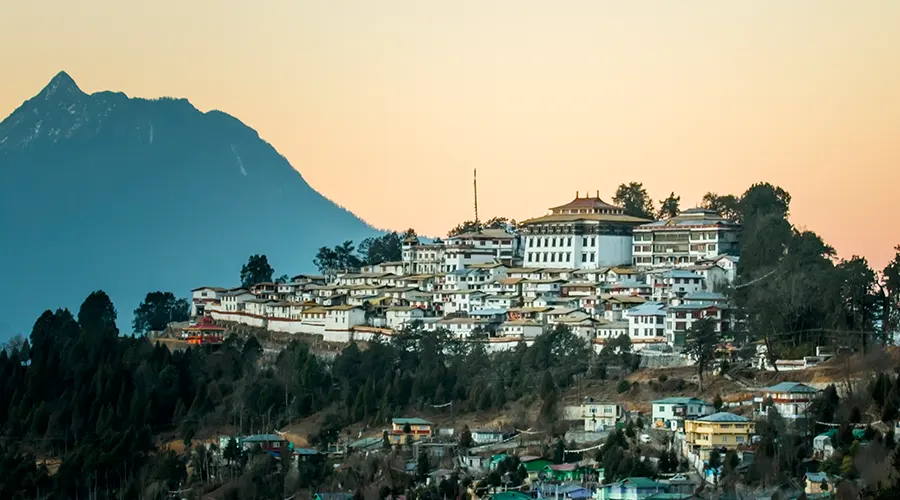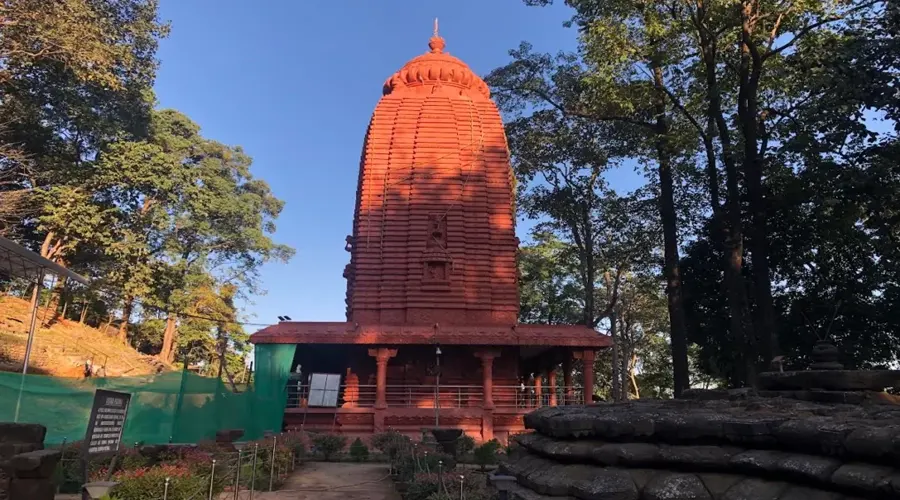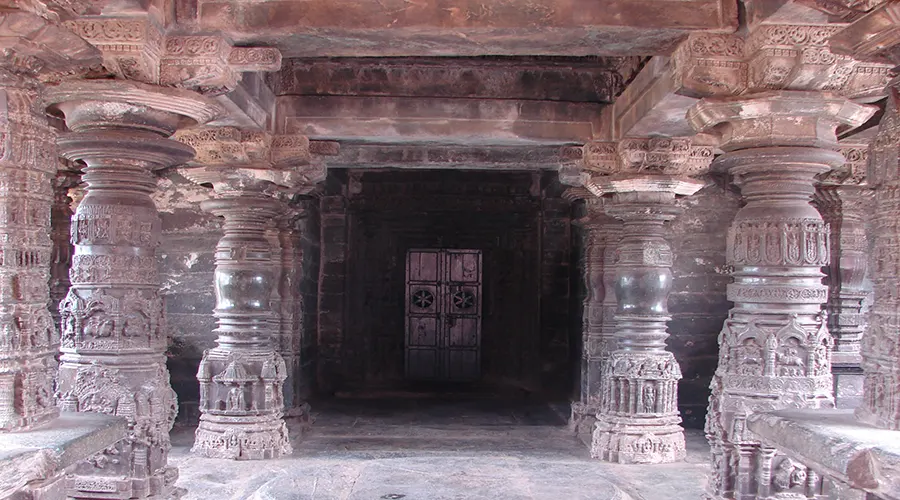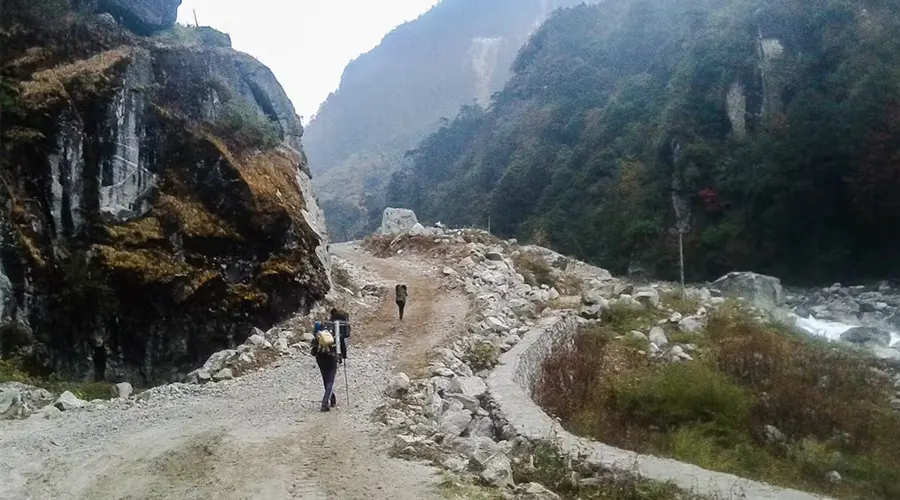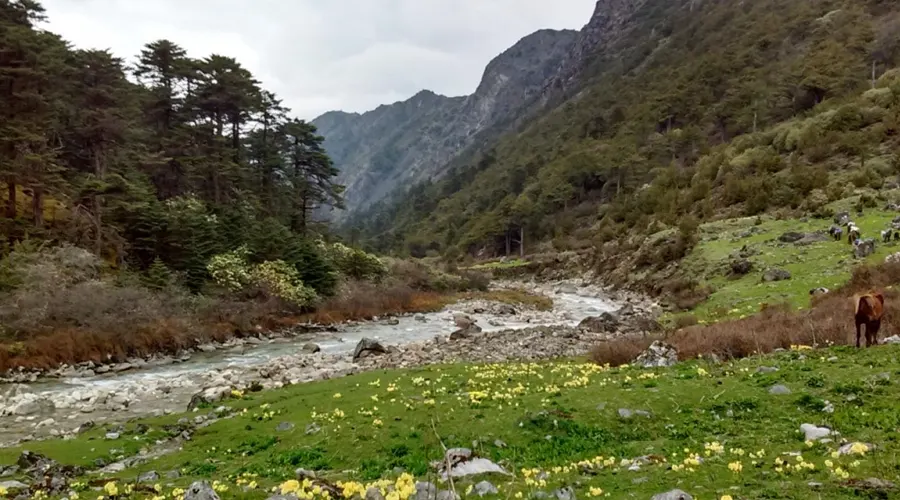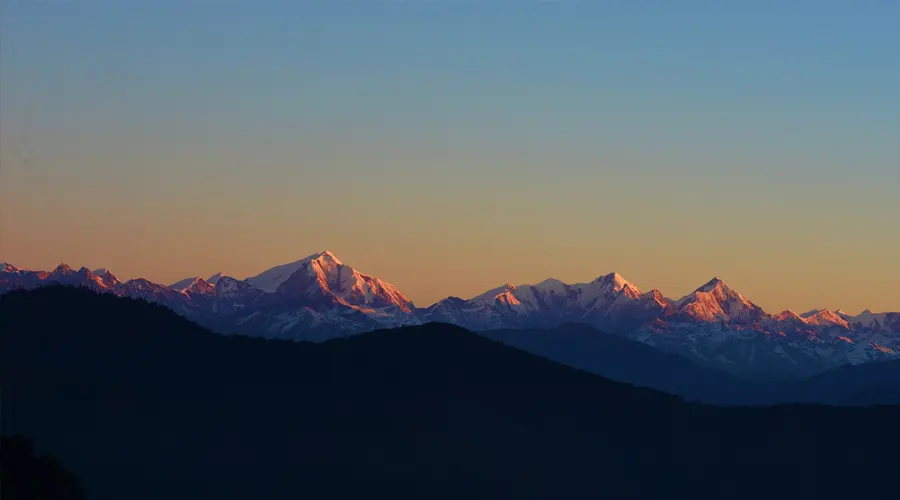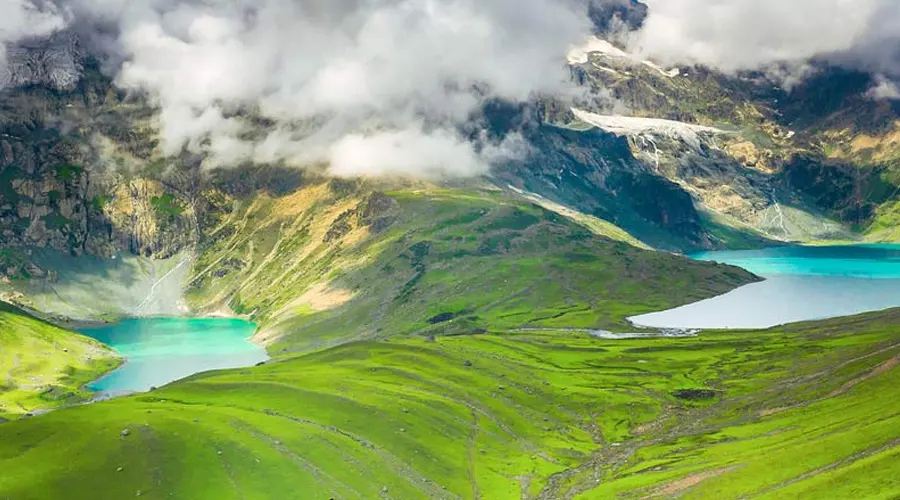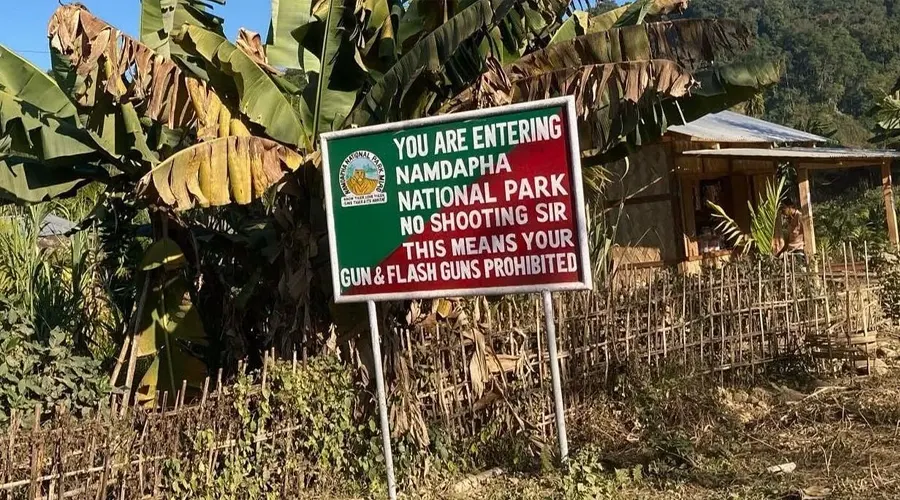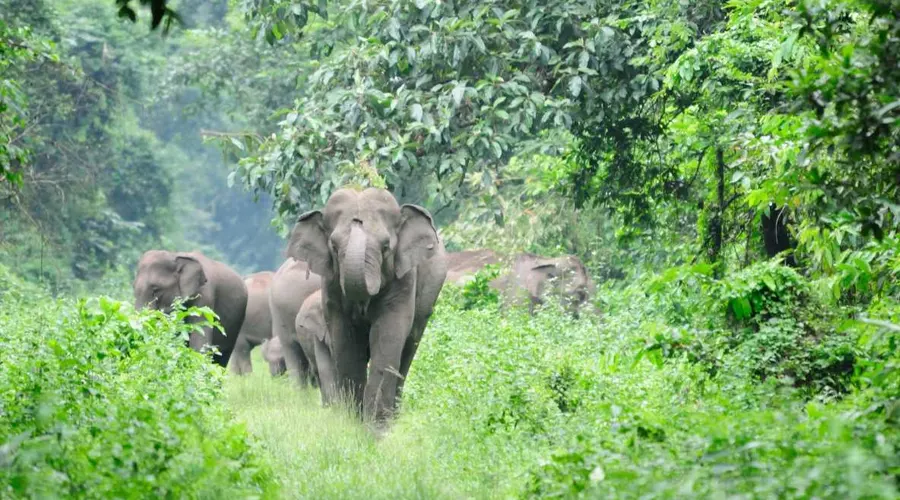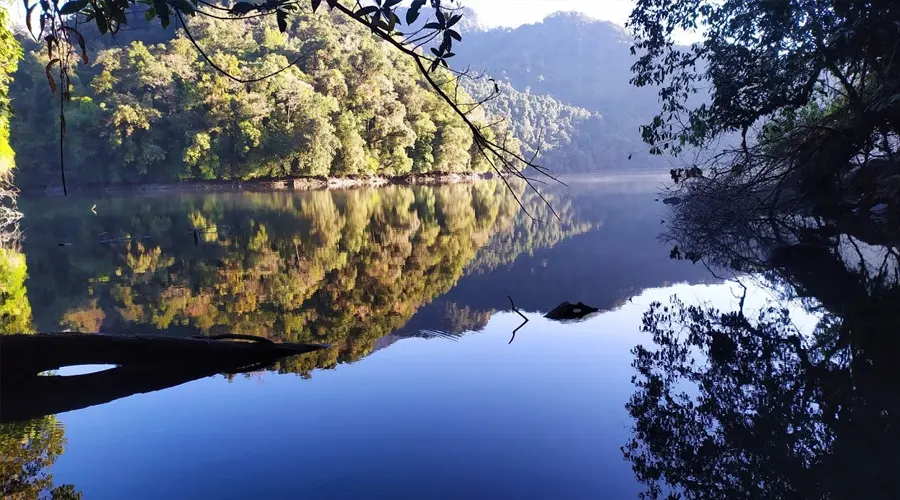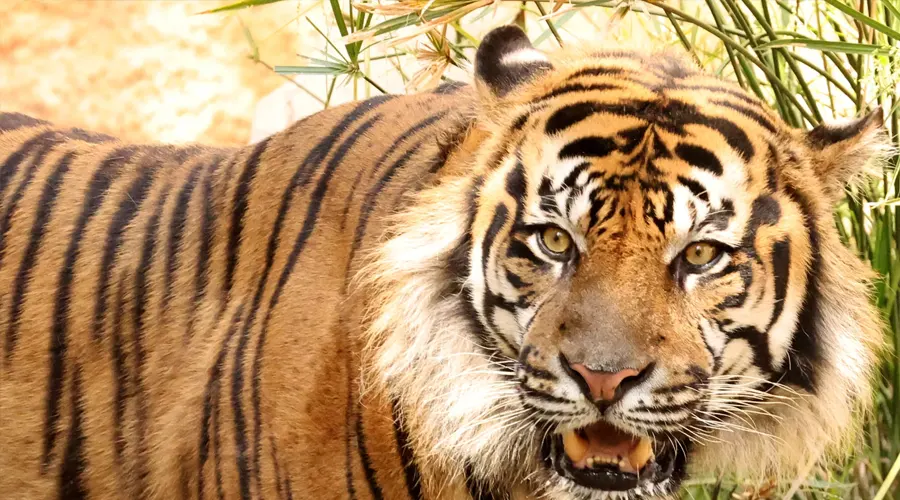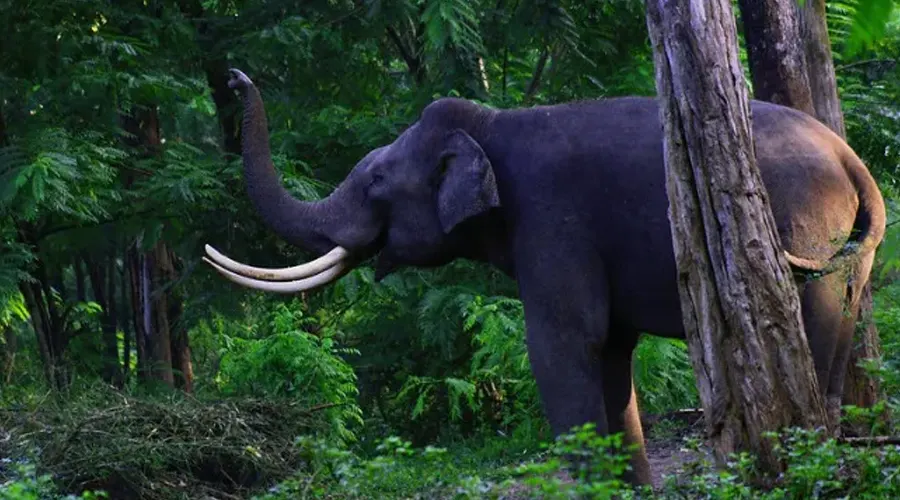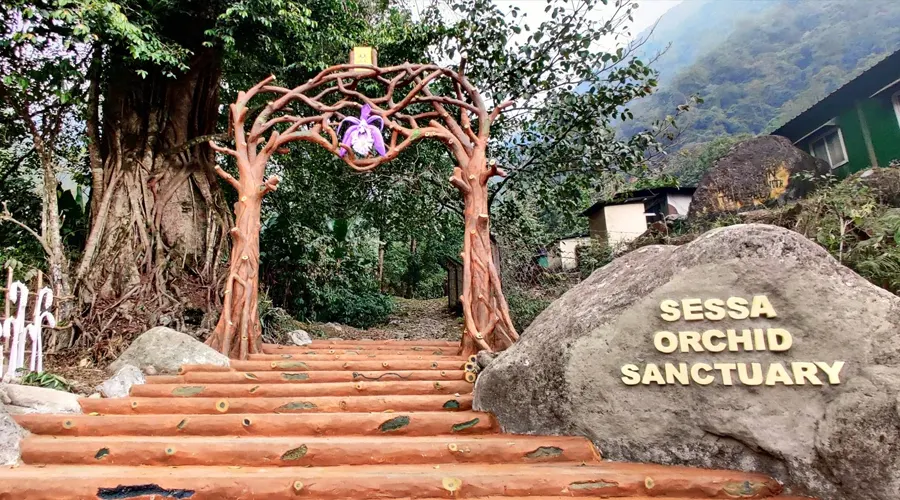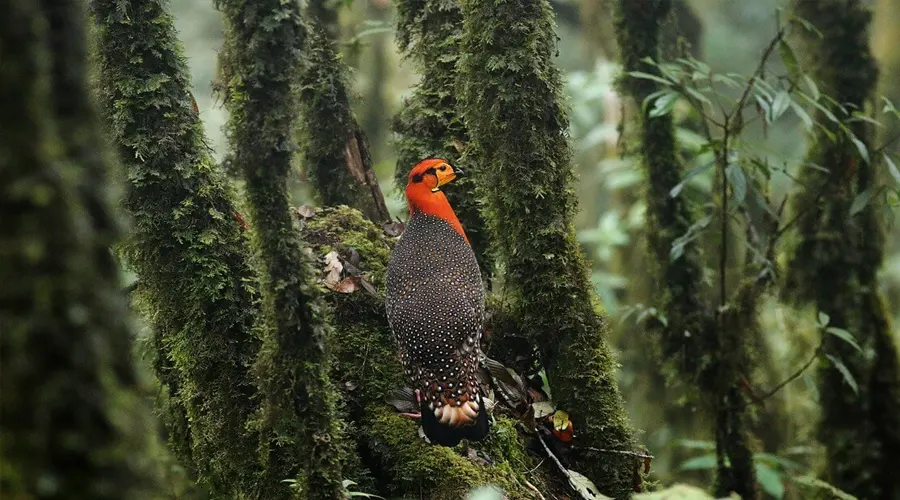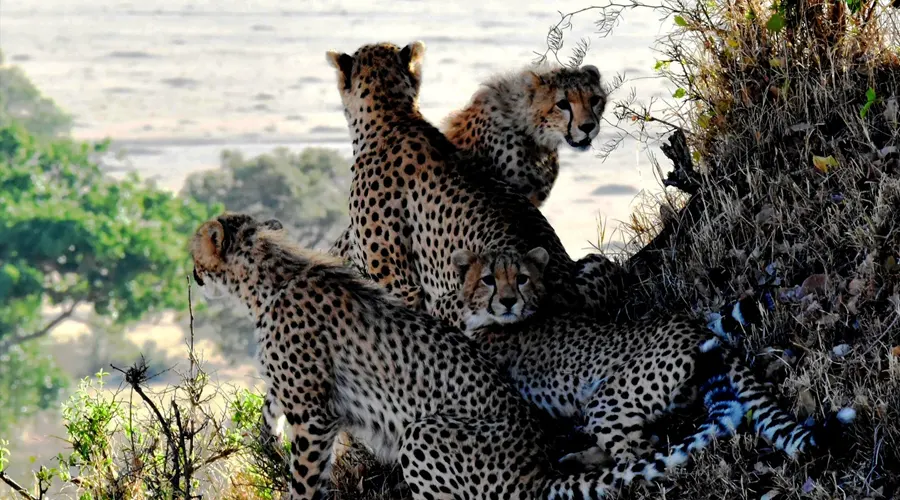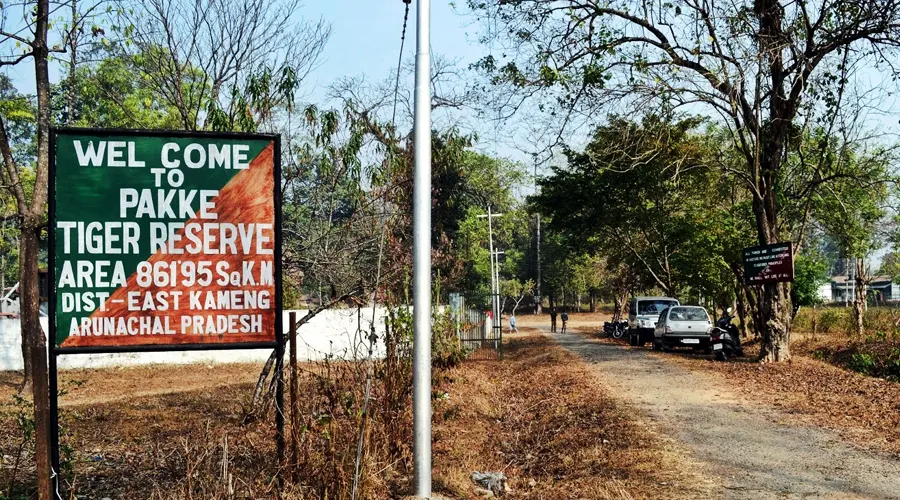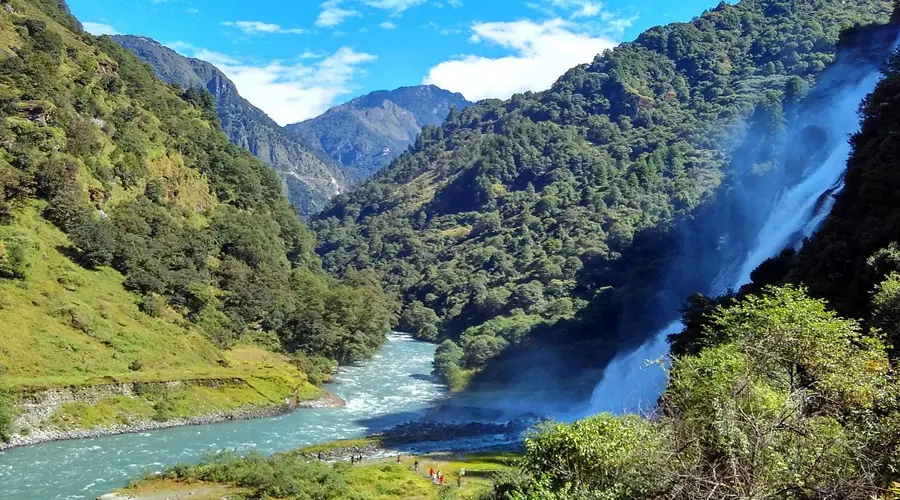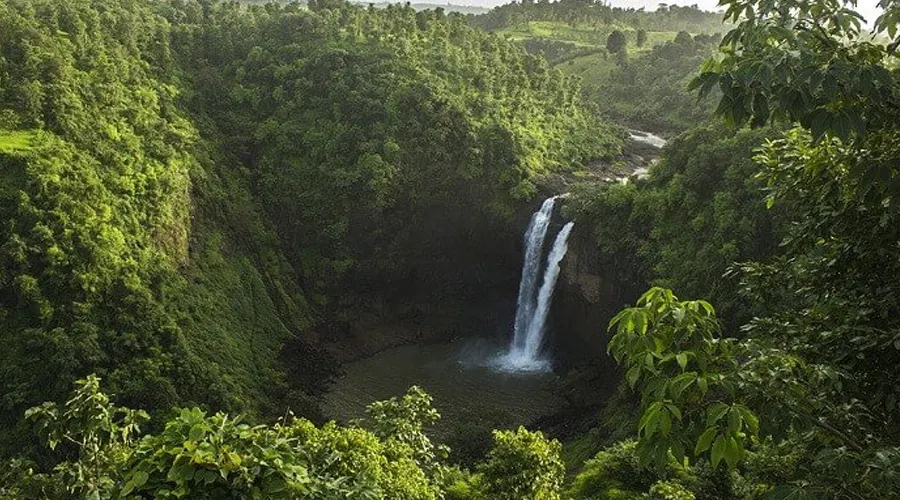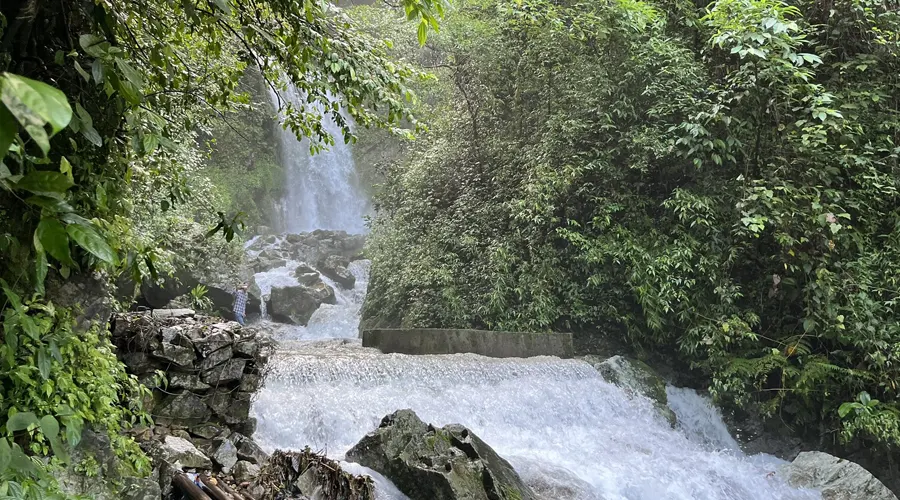Arunachal Pradesh
Arunachal Pradesh is well known for its ancient culture. Known as the 'The Land of Dawnlit Mountains', Arunachal Pradesh finds mention in prominent scriptures of India, such as the Kalika Purana and Mahabharata. Sage Parashurama washed away his sins in Arunachal which was then known as Prabhu Mountains. Sage Vyasa meditated in the forests of this region and Lord Krishna married Rukmini at this legendary site of India.
History Of Arunachal Pradesh
Though India got independence in 1947, Arunachal Pradesh Tourist Destination was not completely an independent state till then. On 20th January 1972, the region officially got the nomination as Arunachal Pradesh and garnered the status of Union Territory. It became a full-fledged state on the 20th of February 1987 and since then the state has maintained the status quo. Prior to that, it was called North-East Frontier Agency with the initials NEFA.
Apart from that, you can also find the mention of Arunachal Pradesh in various Hindu literature scripts such as Mahabharata, Ramayana, and the Kalika-Purana. Though the region has always been given tough times to China and Indian disputes, this disputed land offers highly captivating landscapes. In earlier times Mayapur used to be the capital of Arunachal Pradesh and that was a place with a lot of historical prominences. Now named Itanagar, the present capital is the diverse hub of culture and traditions of the state.
Culture Of Arunachal Pradesh
The home to more than 26 major tribes and sub-tribes, Arunachal Pradesh portrays highly fascinating cultural diversity. All the tribes have their customs, rituals, and traditions, but the beauty of the state is that people of too many cultural differences manage to share their lives. Coming to the major tribes of Arunachal Pradesh, you can count on Galo, Adi, Aka, Apatani, Nyishi, Tagins, Bokar, Bori, and many more.
It is such a place where the majority of people (people belonging to Monpa, Sherdukpen, Singpho, and Khampti tribes) belong to two different Buddhist sects Mahayana and Hinayana, however, the other tribes believe in worshipping animals. Also, its home to people who abide by the Donyi-Polo religion where worshipping Sun and Moon is the way to go. Being one of the most linguistically diverse states across India, Arunachal Pradesh pays homage to people speaking more than 50 dialects of none other than the Tibet-Burman language. Under the Tani dialect -Adi, Bokar, Galo, Tagin, Nyishi, and Apatani are the most common forms of languages here. The western and northern part of the state is inclined towards the Bodic language where Mishmi is famous among the people living in its eastern part. This type of language diversity is very rare to be seen anywhere across the country.
Beliefs about Arunachal Pradesh
The state is home to 26 major tribes and 100 distinct sub-tribes, which brings into the picture a plethora of religious and superstitious beliefs. 40% of the population in Arunachal Pradesh follow Donyi Polo and Rangfrah religions, while the remainder is a majority of Buddhists.
Donyi Polo is based on the belief that the Sun and Moon are the greatest deities of all. The tribes that follow Donyi Polo believe in nature-worshipping and in maintaining harmony with the natural world. They believe that every man has a role to play and a purpose to live. The role is relative to use by the man. They believe in some mythical deities like Kine Nane, Doying Bote, Gumin Soyin, Dadi Bote, and Pedong Nane.
The common belief among all these is that life evolved out of nothingness. The nothingness got transitioned into creating Sedi Melo, the origin of all living and non-living things in the world. They follow highly complex rituals that have been passed down by the earlier generations.
Endogamy between tribes and exogamy between clans is practiced in societies. Polygamy is also accepted and followed.
Next, to Donyi Polo, another popular belief is Buddhism, which is again categorised into distinct subforms. The West Kameng and Taiwan Districts are mainly inhabited by the Tibetan-influenced Monpa and Sherdukpen tribes.
In Lohti, it is Khampti and Singhpo tribes. Other tribes in the state predominantly believe in animal worship and many such ancient beliefs. It is also known that 80 odd tribes of Arunachal Pradesh still hold to some superstitious beliefs such as the fact that the life of human beings are governed by spirits which can be malevolent or benevolent and the only person who can mediate with these spirits is the dandai. Every disease and every misfortune is due to a particular evil spirit. Dandai's services are sought in every case of misfortune, even when someone falls ill. The dandai determines the evil spirit and then decides which animal to sacrifice to propitiate it.
Tribes of Arunachal Pradesh
The culture of Arunachal Pradesh is truly distinctive as it comprises of 26 different tribes including various sub-tribes. Each tribe follows its own traditions and customs. There are mainly three cultural groups in Arunachal.
The first group of the people of Arunachal Pradesh is made of Monpas and Sherdukpens of the Tawang and West Kameng districts. They are the followers of the Lamaistic tradition of Mahayana Buddhism.
The second group comprises Adis, Akas, Apatanis, Bangnis, Mijis, Mishmis, Nishis, and Thongsas, the worshipers of the Sun and Moon God.
The third tribe of Arunachal comprises of Octes and Wanchos tribal communities of the Tirap district. They follow basic Vaishnavism and maintain a strict village society that is ruled by a hereditary chief.
Wedding Celebrations in Arunachal Pradesh
Arunachal Pradesh being a tribal state has unique social customs. These include the many rituals performed during a wedding celebration. These rituals continue for a time span of four to five days and are meant to invoke love and trust in the relationship of not just the couple, but the two families involved.
The marriages can be of two types, either an arranged marriage, known as Aaw Lang Aaw or a situation of eloping known as Thok No Chaii. In the latter case, the groom is allowed to enter the village only after performing the sacrifice of the native fauna, which is conducted by a priest.
The wedding celebrations start with the groom's family gearing and packing up for spending four nights at the bride's home. As per the customs, they move to the hilltop on their way and shout 'Ho' to indicate their arrival. They are welcomed with a grand treat.
A grand luncheon is arranged by the bride's family, on the first day. Night boogie and the party follow this luncheon. There are women in disguise of men, in these parties.
On the second day, it is the groom's family who arranges a grand treat, as a reciprocation of love.
On the third day, which is the day of the wedding, they splash coloured paints on each other as a way to celebrate the marriage.
After these three days, the groom departs with his family, with the hope of a long-lasting relationship and the bride goes to the groom after a year.
Some of the rituals include the groom adorning the bride with a yellow-coloured chain, mostly made of bamboo which is considered sacred. The bride is welcomed by the groom's family with an offering of sugar (Hopha) and a plate full of blooms (Ban Moya). The groom's parents have to present before the bride smoked fish (Pha) and cooked sticky rice (Khaw Tom).
Festivals and Celebrations in Arunachal Pradesh
The people of Arunachal celebrate various occasions for various reasons, be it religious, socio-cultural, or agricultural. The tribal people are simple living people and derive happiness out of small things in life. Since agriculture is the main occupation, there are various festivals where people pray and thank god for a good harvest.
Fairs and festivals are essential parts of the culture of Arunachal Pradesh. The people of the state celebrate a number of fairs and festivals, be they agricultural, religious, or sociocultural. Festivals bring relaxation, enjoyment, and the opportunity to share a moment of happiness with each other.
Some of the important festivals celebrated in Arunachal Pradesh are:
Reh Festival
The Reh Festival is associated with the Idu Mishimis. This tribe believes that they are the son and daughter of the divine Nayi Inyitaya. They perform puja and a number of buffaloes are sacrificed to Nayi Inyitaya during the festival. The festival is celebrated in February-August. The people living in snowfall areas celebrate it during summer and monsoon. The festival lasts for six days and the Naya dance is performed in the night.
Losar Festival
The Losar Festival is celebrated on New Year’s Day in Arunachal Pradesh. Losar is a festival to celebrate the New Year of the Monpa and Sherdukpen tribes of Arunachal Pradesh. It is the major festival of the Monapa tribe. They pray for good health and prosperity in this festival. Buddhist scriptures are read and butter lamps are lit in almost all houses and campuses. The festival is specially celebrated in Bomdila and Tawang with feats, masked dances, and special prayer sessions at monasteries.
Tamaladu Festival
Tamaladu Festival is an important festival of the Digaru Mishimi tribe. Religious, social, and supernatural beliefs are displayed in the festival. The main objective to celebrate this festival is to protect their village, animals, and people from any natural disaster. The tribe offers prayers to the God of the Water and the God of the Earth.
Khan Festival
The Khan Festival is celebrated by the Miji tribe. It is one kind of a religious festival and the social and cultural beliefs are seen in it. The local tribes do not discriminate in this festival.
Mopin Festival
Mopin Festival is an important festival of the Adi tribe. This festival is celebrated for wealth, peace, prosperity, and wisdom and gets rid of natural calamities, diseases, and the effects of evil spirits. It is celebrated in the month of April and lasts for five days. The Popir dance is performed during the festival.
Mol Festival
The Mol Festival is a pre-harvest festival and an important festival celebrated in Arunachal Pradesh. It is mostly celebrated by the Tangsa community. Drums, gongs, cymbals, and folk songs are performed during the festival.
Nyokum Festival
Nyokum Festival is celebrated by the Nyishi community of Arunachal Pradesh. The cultural heritage and ethnicity of the tribe are displayed in the festival. The head priest performs rituals and prayers are offered to the spirit to bring peace, harmony, and prosperity to the people. Traditional dance and traditional art forms are performed during the festival.
Solung Festival
Solung Festival is the main festival celebrated by the Adi tribe. It is celebrated for five days. Solung Puja is performed during the festival to the Goddesses of wealth. It is celebrated to reap a rich harvest after the sowing of seeds and transplantation of paddy plants.
Dree Festival
Dree Festival is celebrated by the Apatani tribe. Domestic fowl, animals, and eggs are sacrificed during the fest. A few rites are also performed during the fest. The main objective of the festival is to appease the gods so that famine could be avoided. Traditional songs and dances are performed at the festival.
Languages of Arunachal Pradesh
Arunachal Pradesh is perhaps one of the most linguistically diverse states in Asia. More than 50 dialects of the Tibeto-Burman language structure can be observed here. Nyishi, Apatani, Bokar, Galo, Tagin, and Adi are common languages that fall under the Tani dialect. Mishmi language is popular in the eastern part of the state. Digaru, Idu, and Miju fall under Mishmi and have been recognized as endangered languages. In the western and the northern districts, the Bodic language is commonly spoken which is subdivided into Dakpa and Tshangla.
Art and Craft of Arunachal Pradesh
Arunachal Pradesh is a land of varied art and crafts. Since time immemorial the art of craftsmanship existed in the land. The range of works includes weaving, painting, cane, and bamboo work, carpet making, wood carving, ornaments, pottery, smithy work, and basketry among others. The womenfolk of the state are experts in handicraft and handloom. The Buddhist community in the state is a good weaver. The Apatani tribe weaves shawls and jackets. The Adi community is famous for its shoulder bag. The Mishimi coat and shawls are very warm.
The people of Arunachal Pradesh are divided among three zones based on their art and culture. The first zone includes Buddhist tribes namely the Sherdukpens and Monpas, the Khowa, Aka, and Miji groups. These tribes make beautiful masks for mask dances. The tribes of the second zone are skilled in making cane and bamboo objects of utility. The Apantanis, Hill Miris, and Adis make beautiful articles of these materials. The people of the third zone are known for their woodcarving skills. The tribes like Wanchos are experts in weaving beautiful bags and loin cloth. Goats’ hair, ivory, and boar’s tusks are used for making important objects of utility. The different art and craft forms of Arunachal are:
Weaving
The womenfolk of Arunachal Pradesh are good weavers. They weave their beautiful traditional attire and other dress like shawls, scarves, blouses and jackets, Adi skirts, and Apatani jackets. They also weave beautiful bags. Black, yellow, dark blue, scarlet, green, and madder are the favorite colors among the tribes in Arunachal. They use both natural and synthetic dyes. The government opened many weaving centers in the state to promote the weaving activity. The Wangcho tribe weaves beautiful Wangcho bags. They use cotton yarn and acrylic yarn to make these bags.
Carpet Making
The Monapa tribe has special skills in carpet making. Repetitive geometric patterns, flora, and fauna, semi-mythical and mythical items like tigers, and dragons are used to decorate the carpets. They use varieties of colors. They weave carpets for personal use, however nowadays it has become a major occupation. The government of Arunachal Pradesh has taken steps to regularize the sale and purchase of carpets to stop the chances of smuggling and to ensure the benefit to the weavers.
Cane and Bamboo work
The cane and bamboo products of Arunachal are highly regarded. Bamboo and cane are used to make handicrafts and household utilities. Through these materials, they make many daily needs products like baskets, mats, belts, attractive smoking pipes, jewelry, can caps, headgear, and cane vessels. These items are available in various districts of Arunachal Pradesh. These works represent their local technology, cultural identity, design, and quality. They also make beautiful baskets. Twill and hexagons are the two basic techniques used in basketry.
Wood Carving
Many tribes of Arunachal Pradesh have a tradition of carving wood. The Monpa, Khamti and Wangcho tribes are some of them. They make beautiful bamboo mugs, dishes, fruit bowls, and masks. Images of Lord Buddha, dancers, animal figurines, warriors, and a miniature of Morung are the famous wood carvings.
Ornaments
The people of Arunachal Pradesh also show their expertise in ornament making. They make different designs of ornaments. They use different colored wings of birds and beetles to decorate the ornaments. Bamboo bangles and ear ornaments are mostly created by the Aka community. The Wancho girls are experts in beadwork. The Mishimi tribe has skill in making silver ornaments. The Mishimi woman wears a silver fillet necklace with a locket and earrings. The Apatani women wear nose plugs of bamboo.
Black Smithy
The tribes of Arunachal have another skill in blacksmithy. They use metal to make weapons and tools like arrowheads, knives, and iron bracelets.
Occupations in Arunachal Pradesh
Agriculture is the main occupation of Arunachal Pradesh's people. Jhum cultivation is the major occupation practiced by farmers. Jhuming involves cleaning a portion of the forest by cutting down and burning the trees and then sowing seeds in those areas with the help of poker. Many farmers have been relying on this form of agriculture for their livelihood for years now.
The majority of the land in the state is covered with dense forests and lands. These forests provide products and industries based on processing them, which gives employment and income to many populations. Most of the industries in the state are based on natural products from forests like timber and plywood.
Other industries also include tea, petrochemical, and cement. Fruit cultivation is also practiced in some parts of Arunachal. It has become a significant sector for fruit cultivation and horticulture. This sector has been providing income to many farmers too.
The cuisine of Arunachal Pradesh
A typical dish of Arunachal Pradesh varies with region and according to the tribal influence. An alcoholic drink Apong or rice beer made from fermented rice or millet is a popular beverage in Arunachal Pradesh. The staple food is rice along with fish, meat, and green vegetable. Rice is prepared in two ways called Dung Po and Kholam. Rice is such an integral part of their culture that the Mopin festival of the Galo tribe is celebrated with smearing rice on people’s faces. Fried food is not very popular as people like to eat either boiled or smoked food.
Thukpa is a signature dish of the state and is a delicious noodle soup prepared with a variety of meats and vegetables. Curry leaves are a must-have ingredient in every dish, and so is bamboo shoot in Arunachal Pradesh. Lettuce is the most preferred vegetable of all. There is devoid of any spice and is nutritious due to the generous use of herbs and vegetables.
They love fermented soybeans, fermented meat and fish, bamboo shoots, phoi hom (indigenous scented spice leaves), and pickles. Fish is consumed only occasionally due to its scarce availability. Chicken, mutton, pork, and Mithun are consumed throughout the state. Wild birds and animals were a big part of their diet but Modern restrictions on hunting have made that non-existent.
Monpa Cuisine
The Monpa cuisine is popular for its tastes and beautiful use of chilly in its foods. Butter tea is an important beverage of the Monpas in addition to alcoholic drinks which are consumed by both men and women. Monpas are mostly non-vegetarians and their favorite dishes include Momos, Zan, Khura, Gyapa-Khazi, Pua, and Kyola among others.
Momos are prepared by stuffing a mixture of minced meat and onion in the dough. They are then steamed for about half an hour in a three-tied perforated utensil placed about another utensil containing water. Zan is prepared from millet or other favored flour to boiling water. After that, it is strived with a flat wooden appliance and taken with any cooked vegetable or meat to which fermented cheese and soybean are added.
Khura is a Monpa pancake that requires a little quantity of water to be added to flour and stirred until it turns into a thick paste and is kept near the hearth throughout the night for the cake to become soft. Then it is spread into a frying pan in a little amount of oil and fried and taken with tea. Gyapa-Khazi is a Monpa version of pulao. It is prepared by mixing rice, fermented cheese, small dried fish, chilies, and ginger.
Dance and Music of Arunachal Pradesh
Dance and music are an essential part of the life of Arunachali tribes. They dance and sing on important occasions and during the time of festivities and weddings. Various dance forms are seen in different parts of Arunachal. From elaborate religious dance dramas of the Buddhists to the martial arts and colorful dance performances of the Noctes and Wanchos, the dance forms of Arunachal come in various formats. They can broadly be divided into four categories- Festive Dances, Ritual Dances, Recreational Dances, and Dance Dramas.
Some popular folk dances in Arunachal Pradesh are Aji Lamu, Chalo, Hiirii Khaniing, Popir, Ponung, Pasi Kongki, Rekham Pada, Roppi, Lion, and Peacock dance. Most of the dance forms are accompanied by chorus songs.
Some of these dances are:
Wancho Dance
The Wancho tribe of Arunachal Pradesh celebrates the Wancho dance. The dance is performed only in festivals and ceremonies. The Wancho dance is performed inside the house of the chief authority. The male folk, youths, and adults take part in the dance. The male performers sing-song and take short steps with their right foot towards the right. They also deck themselves with cane baskets that hang behind them. The menfolk wear special dresses. They wear anklets of straw and girdles and a band of cowries on their shank. They also wear woolen threads of earplugs on their ears and headdresses.
Khampti Dance
The Khampti dance is also known as Kampung, which literary means a story that is depicted through dances. The Khampti people perform the Khampti dance. It is one kind of a folk dance. This dance is performed during the religious festivals. The dance unfolds the myths and stories of moral values. Khampti dance is generally performed in monasteries. The dancers are invited by the wealthy people to perform in their courtyard.
Buiya Dance
The Buiya dance is performed by the Digaru Mishmi people. It is performed for entertainment and performed during the Duiya, Tanuya, and Tazampu festivals. The dance brings prosperity and vitality to the tribe. There are no limits of the age of the participants for the dance. This dance does not need any traditional wear. Participants wear the usual dress for the dance. Participants play musical instruments like drums, gongs, and cymbals.
Ponung Dance
The Adi tribe performs the Ponung dance. The Ponung dance is accompanied by a song. Both men and women participate in the dance. It is organized on all the major occasions in the region. The boys and girls form in separate groups. The girls dance in a circle by holding each other. A man generally called Miri dances and sings around the circle. He also plays musical instruments.
Music also forms an integral part of their life and songs are sung to rejoice over their folk history, mythology, and events from their past. The songs have fables relating to animals and moral teachings.
Costume of Arunachal Pradesh
Arunachal Pradesh is a land of diversity and people here love their traditional costumes and are proud to showcase them at festivals. Each tribe has its own distinct clothing styles depending on the geographical region to which they belong and what they have derived the most style of clothing from their ancestors. They use fiber from goats, trees, and human hair to create coats, shawls, skirts, sashes, and lungis.
The traditional women’s dresses of Arunachal Pradesh have vibrant colors and myriad patterns that instantly give a feel of their tribe’s culture. They like geometric patterns, and the most popular motives are ZigZag lines and angular designs.
Women of the Monpa beautify themselves with earrings, silver rings, bamboo bits, red beads, and attractive turquoise they wear a warm jacket and Shingka which is a sleeveless gown of light red color with white stripes. It is made of a coarse end. It is lifted and girdled around the waist by a red-colored sash called khichin. The warm jacket worn over is a lavishly embroidered full-sleeve maroon color shirt with an opening in the front. During winters a thick woolen cloak dyed red with madder, called chupa, is worn. It is tied around the waist with a matching sash, called khichin, and is puffed out above.
The Menfolk of Sherdukpen tribe which resides in the southern region of Bomdila wears sleeveless material made of silk with 2 edges that are pinned property at the shoulder area. The clothing is usually knee-long. Its hallmark is the skull caps smeared with the hair of yak. Sherdukpen women dress up in sleeveless and collarless garments. Over it, they wear a full-sleeved jacket, which is embroidered, and tie a waistcloth known as mushaiks.
The Apatani priests may wear special shawls on ceremonial occasions. This shawl with an extraordinary design is said to have special supernatural power. Apa Tani, priest’s shawl there are genuine spirals, some of which are actually curved. The lower wrap-around of adi, and apatani women is known as galae which has colored stripes in it. Basically, yellow and red in color. The shirt worn by them is called the galuk.
Different types of headgear are used by both men and women. But the most common is called ngama-shom. It is made of yak’s hair, hardly an inch in thickness. It has the shape of a skull. It has no brim but has five tapering points of about three inches in length twisted out from the body of the material to the thickness of a finger. It is worn by both men and women. Modernization has uninfluenced clothing styles in Arunachal Pradesh, and still, the tribal people wear their costumes.
Tourism of Arunachal Pradesh
In Arunachal Pradesh, you can relive in nature in its full splendor. Enjoy the salubrious climate and meet its simple and hospitable people. Snowy misty, famous monasteries, unexplored passes, and tranquil lakes come together to form some of the prettiest mountain spots in Arunachal Pradesh. The place offers you peace and action where you can relax and rejuvenate.
Major tourist places of Arunachal Pradesh are Tawang, Parshuram Kund, Buddhist temple, Bhishknagar Fort, Bomdila, Itanagar, Galaxy Waterfall, Dirag, Tipi, Malinithan, Likabali, Namdka, Parasuramkund, Pishigat, Along, Tezu, Miao, rowing, Daporijo, Namdapha, Bhishmaknagar, Parashuram Kund and Khonsa. etc.
The wildlife sanctuaries of Arunachal Pradesh make tourism quite prosperous. Namdapha National Park, Eglanest Wildlife Sanctuary, Dying Ering Wildlife Sanctuary, etc. are important.

